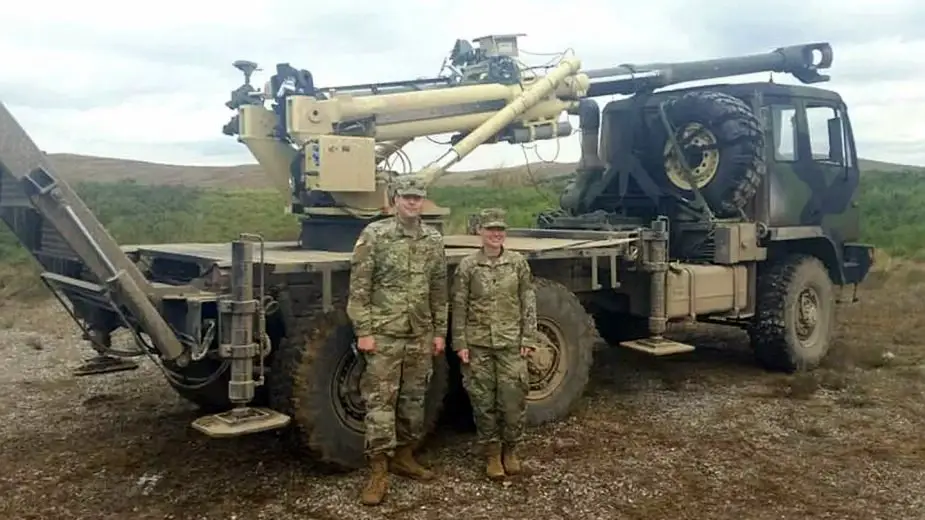U.S. Army tests truck-mounted, low-recoil 155mm howitzer called Brutus
The U.S. Army has been testing a truck-mounted, low-recoil 155mm howitzer at Fort Sill, Oklahoma, as reported by Joseph Trevithick on The Drive. The new somehow self-propelled howitzer would meet the service’s requirements for a lighter weight mobile option to replace existing howitzers in its Stryker armored vehicle-equipped, light infantry, and airborne units.

The Brutus is a 155mm howitzer mounted on an AM General 5-ton FMTV truck, using Mandus Group's "soft recoil" technology. It was recently fired at the Fires Center of Excellence Maneuver Fires Integration Experiment at Fort Sill, Oklahoma (Picture source: U.S. Army)
On 26 October 2018, the 75th Field Artillery Brigade announced that its troops had fired the first round from the howitzer nicknamed Brutus, during a recent Maneuver and Fires Integrated Experiment (MFIX) exercise at Fort Sill. These routine drills have long provided an opportunity to evaluate other novel and advanced weapon systems. 75th Field Artillery Brigade, 1Lt Monika Lewandowska served as the Fire Direction Officer for the first ever round fired from the Brutus, an experimental 155mm forward recoiling howitzer mounted on a 5-ton M1083 FMTV (Family of Medium Tactical Vehicles truck). No official detail is available about the howitzer itself, but it is almost certainly Mandus Group’s 155mm Soft Recoil Howitzer, which has been in development since 2011.
The company also proposed an artillery system called Hawkeye, a low-recoil 105mm howitzer mounted on a Humvee but possibly mounted on a robust pickup truck as well.
The U.S. Army's experimental truck-mounted forward-recoiling 155mm howitzer, known as Brutus. When firing, the barrel and breach assemblies move backward to absorb some of the resulting force. The rest of the recoil force goes into the firing platform, such as a truck or tracked vehicle, or into the ground more directly in the case of towed weapons. This produces significant strain on the entire system and generally precludes many lighter weight vehicles from carrying large howitzers due to the potential impacts on accuracy and dangers of severe wear and tear in a relatively short amount of time.
As explained by Joseph Trevithick , Mandus’ guns use what is known as a “forward-recoiling” or “fire-out-of-battery” operating mechanism. It means that when the crew fires the gun, the barrel and breach move forward first. In principle, this momentum helps further cancel out the recoil, making the gun more accurate and otherwise suitable for mounting on lighter vehicles. Digital ballistic targeting computers and precision-guided munitions would only improve the weapon’s accuracy even when fired from a lightweight platform.
In February 2018, the U.S. Army, the U.S. Army announced it was again interested in exploring available options for a new mobile howitzer to replace its existing 105mm and 155mm towed types. The need soon appeared to develop a new 155mm system that would be available in both short- and long-barrel variants and come in a package better suit the demands of different types of Army artillery units. Mandus' soft-recoil system is ideal for meeting those requirements and the company already offers its 155mm design with two barrel length options. The Army’s experimental “Brutus” uses the shorter type. It could be light enough as sling load under a heavy helicopter.
The 155mm howitzer puts considerable strain on the FMTV chassis, which could lead to accuracy issues. It's also not clear whether crews would be able to safely fire the gun in any other position besides straight ahead, which allows the vehicle to help absorb the recoil of firing. This, in turn, could force them to have to take precious time to reposition the vehicle entirely in order to engage targets to either side. One may also doubt the system can accommodate the propellant supercharges required for extended ranges.


























